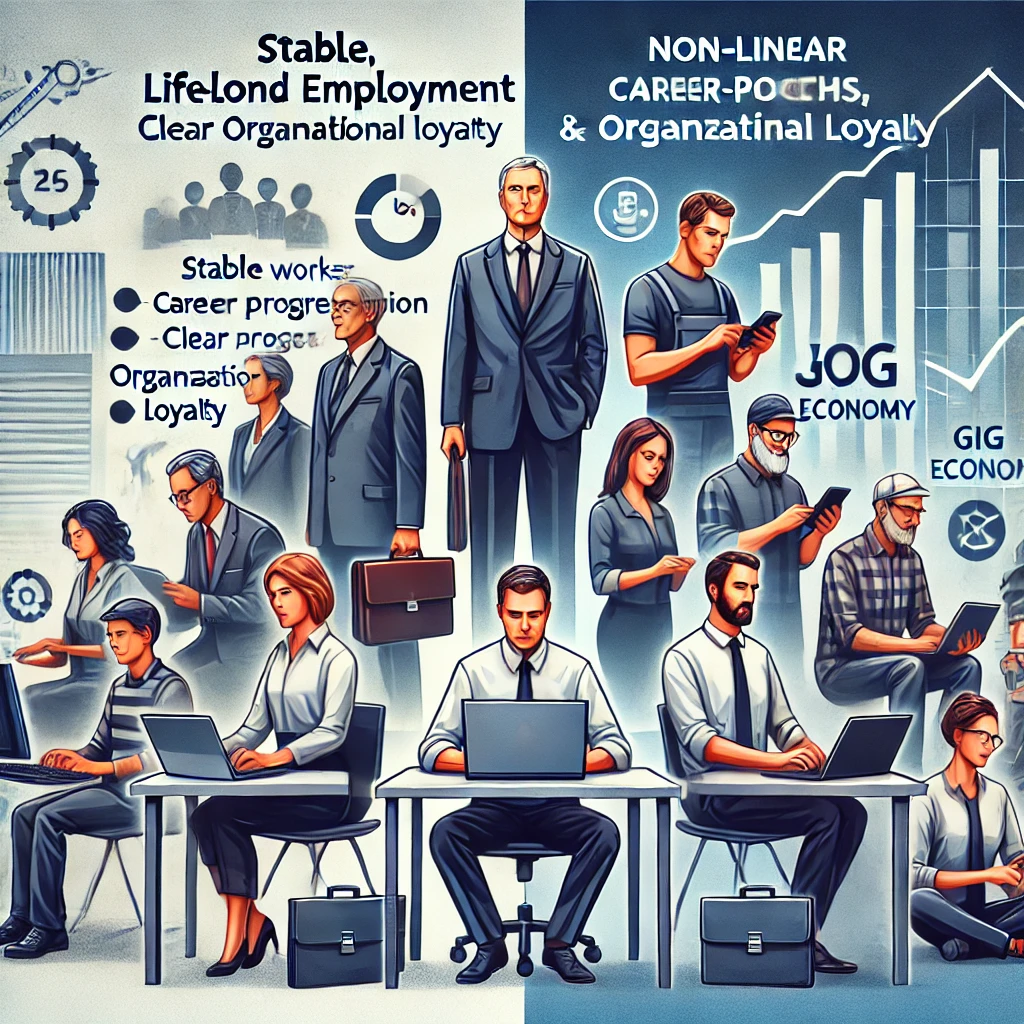
Over the following weeks, this blog will explore the changing environment between 20th-century traditions, orthodoxies, and 21st-century realities. This week, we will consider Lifelong Employment and Career Stability.
The employment landscape has significantly transformed from the 20th to the 21st century. This shift from lifelong employment and career stability to more fluid and non-linear career paths presents challenges and opportunities for associations. As association executives, understanding and adapting to these changes is crucial for staying relevant and effectively serving your members. It also pushes us to think of a BANI-driven world presented in an earlier blog.
The 20th-Century Tradition: Lifelong Employment and Career Stability
In the 20th century, lifelong employment was a cornerstone of many organizations. Professionals often spend their careers with a single entity, benefiting from stable employment, pensions, and a clear career trajectory. This stability fostered long-term membership in industry associations, allowing for strong, lasting relationships and consistent professional development.
Key Characteristics:
- Organizational Loyalty and Pension Systems: Many industries, such as manufacturing, government, and education, encouraged long-term employment by offering pensions, health benefits, and promotions tied to seniority.
- Social Contract: There was an unwritten “social contract” where businesses provided stability and security, and employees reciprocated with loyalty and long-term commitment.
- Government Policy and Cultural Norms: Policies like Social Security and the rise of labor unions contributed to long-term employment expectations, especially in the post-World War II era.
The 21st-Century Reality: Fluid and Non-Linear Career Paths
Today, the employment landscape is characterized by frequent job changes, career pivots, and the rise of the gig economy. This shift requires associations to rethink their strategies to attract and retain members who may no longer follow traditional career paths.
Key Characteristics:
- Shift to Knowledge Economy: The transition to a knowledge-based economy has led to more flexible employment opportunities, with technological advancements and automation reducing long-term, secure jobs in traditional sectors.
- Job Hopping and Career Pivots: Younger generations, especially millennials and Gen Z, change jobs more frequently, with the average tenure of a U.S. worker around four years.
- Decline of Defined-Benefit Pension Plans: The shift from traditional pension systems to 401(k) plans has reduced employee incentives to stay with a single employer for their entire career.
- Rise of the Gig Economy: Platforms like Uber, Fiverr, and Upwork have facilitated the growth of the gig economy, with a significant portion of the workforce engaging in freelance work.
- Emphasis on Lifelong Learning: Rapid technological changes require continuous skill updates, leading to more frequent career changes or pivots.
Implications for Associations
- Dynamic Membership:
- Adapt to Change: Associations must adapt to a more dynamic membership base, continuously attracting new members and retaining existing ones who may change industries or roles more often.
- Diverse Professional Development:
- Broaden Offerings: Offer a broader range of training and certification programs to cater to the diverse and evolving needs of members, including resources for career pivots, upskilling, and reskilling.
- Flexible Networking Opportunities:
- Virtual and Hybrid Events: Facilitate networking opportunities that cater to the gig economy and freelance workers through virtual events, online communities, and flexible membership options.
- Advocacy and Support:
- Policy Advocacy: Advocate for policies that support the gig economy and freelance workers, such as better access to benefits and protections. Provide resources and support for members navigating these new career landscapes.
- Emphasis on Lifelong Learning:
- Continuous Education: Emphasize lifelong learning by offering constant education programs that help members stay current with industry trends and technological advancements, supporting career agility and adaptability.
Coda
The shift from lifelong employment to more fluid career paths presents a unique opportunity for associations to innovate and better serve their members and staff. By understanding these changes and adapting strategies accordingly, associations can remain relevant and provide valuable support to their members and staff in a rapidly evolving job market.
As association executives, how are you adapting to these trends? What strategies have you found effective in engaging and supporting your members and staff in this new employment landscape? Share your thoughts and experiences in the comments below!